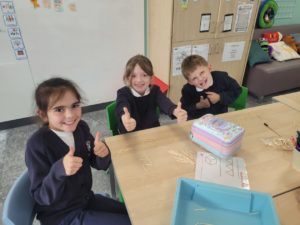
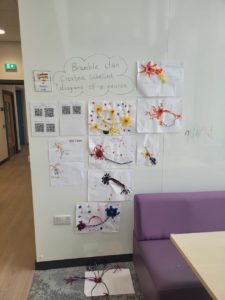
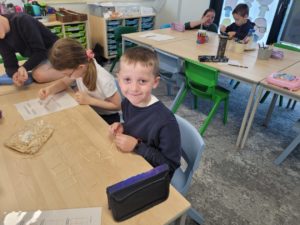
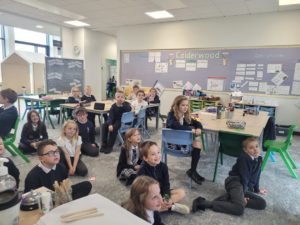
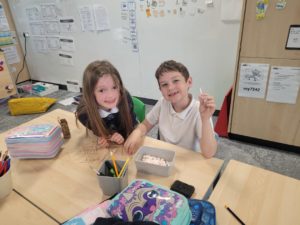
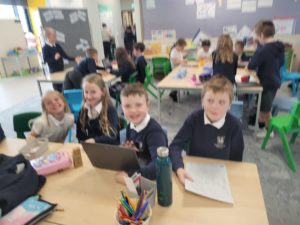
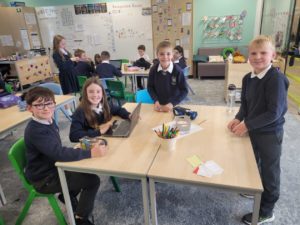
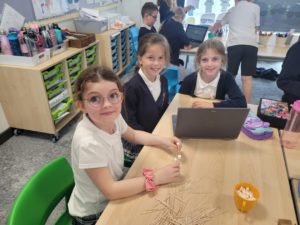
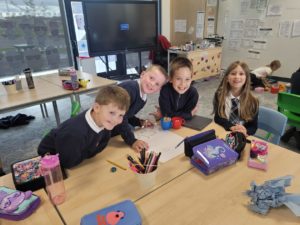
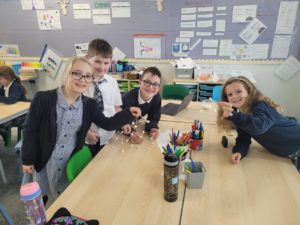
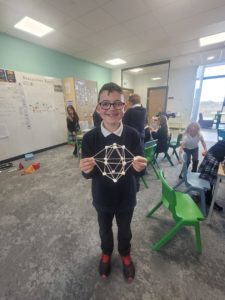
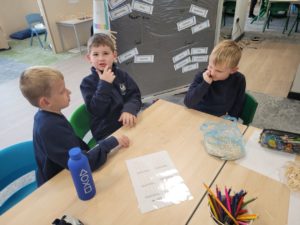
The Brain
In Bramble clan, we have been learning all about our Fantastic Elastic Brain. Through this IDL we have been learning what the names of the parts of the brain are, what each part can do and help us to do and how we can use our brains to help us problem-solve. We have thought about our own unique brains and what makes our brain fantastic.
Matchstick puzzles
We have been exploring matchstick puzzles in problem-solving. Through this learning we have been exploring what parts of the brain we have been using and how they are helping us to complete the puzzles. We are aware that our hippocampus will store our memories and so each time we try to complete the puzzle and we get it wrong, our hippocampus remembers this and we can try something new next time. Our Amygdala is in charge of our emotions and we have realised it can be frustrating and uncomfortable when we struggle to complete a puzzle but when we manage to complete it, it makes us feel good and proud. Our pre-frontal cortex helps us make plans and decisions and we are able to think through what is expected in the puzzle and what we might do to solve it. We realised we were developing our resilience and perseverance while completing these puzzles too.
What is a neuron?
We have learnt that our brain is filled with lots of neurons but what do they look like? We explored our nervous system to learn how our nervous system works and what part neurons play in this. We then looked more closely at what a neuron is and what it looks like. We then were given lots of craft materials to create our own version of a neuron. We could use any materials we wish. We really enjoyed this and have displayed our neuron creations out in our Bramble clan area.
3D shape – Maths through stories
We have been exploring the names of 3D shapes and their properties. First of all, we listened to the story, ‘Samantha’s Search’. Samantha the fairy was on a search for 3D shapes in the environment. She found lots of different 3D shapes and explored lots of real-life objects that are in fact 3D shapes. One of us realised why the sun was called a sphere in a text he had read saying “oh, that’s why the sun is called a sphere because that is its shape!”
After listening to the story, we were set a group challenge. In our groups, we had to research 3D shapes and find out their names and properties. We had to create a Power-point, sway or poster, detailing what we found out – the name of the shape and its properties. Our group also had to create 3D shapes out of cocktail sticks and small marshmallows. We created triangular prisms, cubes and pyramids. Some of us even combined 2 shapes to create larger, more interesting shapes. Mrs Scobie asked everyone if they thought their brains had grown a bit more today and we all agreed that they had. We had learnt more knowledge and were using our fantastic brains to create the shapes and learn more about them whilst using technology to present our information.
We had a great time doing this task and may have sneakily eaten a few marshmallows along the way!
